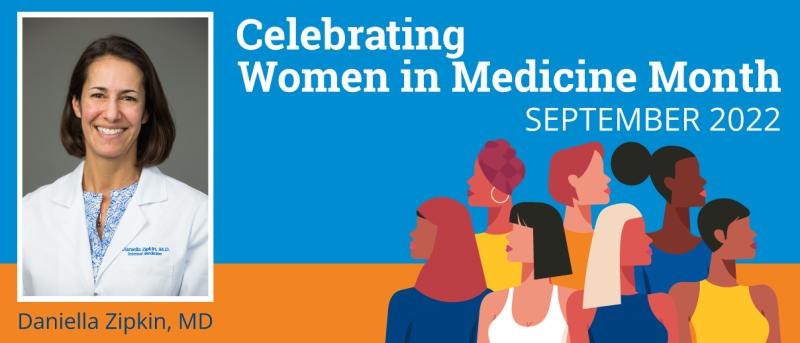
“The system was perfectly designed to get the results we are getting”. I’m not sure who first said this, but to me it means that we are grappling with disparities in academic advancement for women, people of color and other marginalized groups because the system was built within a white, cis, straight male frame. This may sound provocative, but it’s true of all of our nation’s institutions – government, law, finance, education, housing, social programs, and of course, health care. Majority groups have historically held power and built our institutions from their own perspective. Members of majority groups generally are not doing this intentionally. I don’t think it’s anybody’s fault. Yet it results from a historical power dynamic and the lack of diverse voices at the table when decisions are being made and structures are being built. My challenge to all of you, and my purpose in writing this, is to ask us all to pause, to see the systemic bias with which our systems were built, and to engage together to right historical wrongs.
So, what results are we getting? In my grand rounds from July 15th of this year, I reviewed multiple well documented disparities experienced by women and people of color which contribute to inequity in promotions. Women are paid less and are less likely to have adequate mentors, resources, leadership roles and opportunities than men in similar roles (Jagsi et al. JAMA. 2012;307:2410-7. Women experience harassment and discrimination based on their gender (Ruzycki et al. JAMA Network Open. 2019;2:e1915165). When we appear too young, we can be perceived as less capable or less authoritative. When we appear too old, we are often perceived as soft or motherly. When we are confident and assertive, we are sometimes viewed as aggressive and not likable. When we are quiet, we can be overlooked. Women are more likely to have working partners, and also take on a greater proportion of domestic duties than men who have working partners (Jolly et al. Ann Intern Med. 2014;160:344-353). Despite all of this, women conduct outstanding science, design impactful educational innovations and provide exceptional clinical care. And yet, the disparity between women and men with regard to academic promotion has been consistent and durable since we started collecting this data – in 1979 (Richter et al. New Engl J Med. 2020;383:2148-57). Women in medicine are carrying a heavy load. We need to understand and account for that load when hiring, compensating, managing teams and supporting faculty in their advancement.
Privilege comes in many forms. Gender and race are joined by social/economic class, ethnicity, religion, sexual orientation, age, body type, ability and even physical attractiveness in defining forms of privilege. Each of us is a collection of group identities which add up to how we experience the world, and how the world views us. Intersectionality refers to the interaction between multiple facets of identity. The marginalization of Black women in medicine involves both gender and race discrimination and evolves from there based on other individual traits. Initiatives focused on gender equity alone are insufficient for addressing the interpersonal and institutional dynamics of both gender and race inequities. Black women physicians experience invalidation, microaggressions and macroaggressions which create heavy burdens and lead to chronic stress (Onyinyechi et al. Lancet. 2021;397:573-4). Black people in the United States suffer the heaviest burden of the impact of bias and systemic racism. Indeed, Black faculty fare worse than all other groups in terms of success with promotion. (Nunez-Smith et al, Am J Public Health. 2012;102-852-858 and Xierali et al, Acad Med. 2021;96:1441-1448) It makes sense for us as an academic community to focus our attention on our Black women colleagues as we re-work the structures we have in place to improve the career success of all of us. We must measure our collective success by the success of our Black colleagues.
As Chair of the Program for Women in Internal Medicine for the past two years, I’ve appreciated being at the table for our department’s multiple conversations on gender and race equity. I am deeply grateful to work in a department that is open to self-examination and committed to getting this right. We are revising our compensation plans with equity at the forefront. We are compensating our underrepresented faculty for the disproportionate time we ask them to spend in recruitment of diverse residency classes, and in recognition of disparities in debt burden, we are awarding loan repayment grants to underrepresented faculty in research. We are moving the needle. And, we still have much work to do. Every single one of our faculty has a role to play in our success. Regular rank faculty can start talking about equity in routine clinical and research meetings. Question it when you see something that seems unfair. Medical directors, unit leaders, division chiefs, and department leaders can vigorously examine all of their practices, their working groups, their decision-making processes to ensure balance and equity. We can all recognize that no one is immune from blind spots – from the implicit biases that result from our historical and cultural context. Unless we are intentional about seeing what is difficult to see and then working to address it, we will continue to get the results the system was perfectly designed to get.
Daniella Zipkin, MD, is an associate professor of Medicine and chair of the Program for Women in Internal Medicine (PWIM).